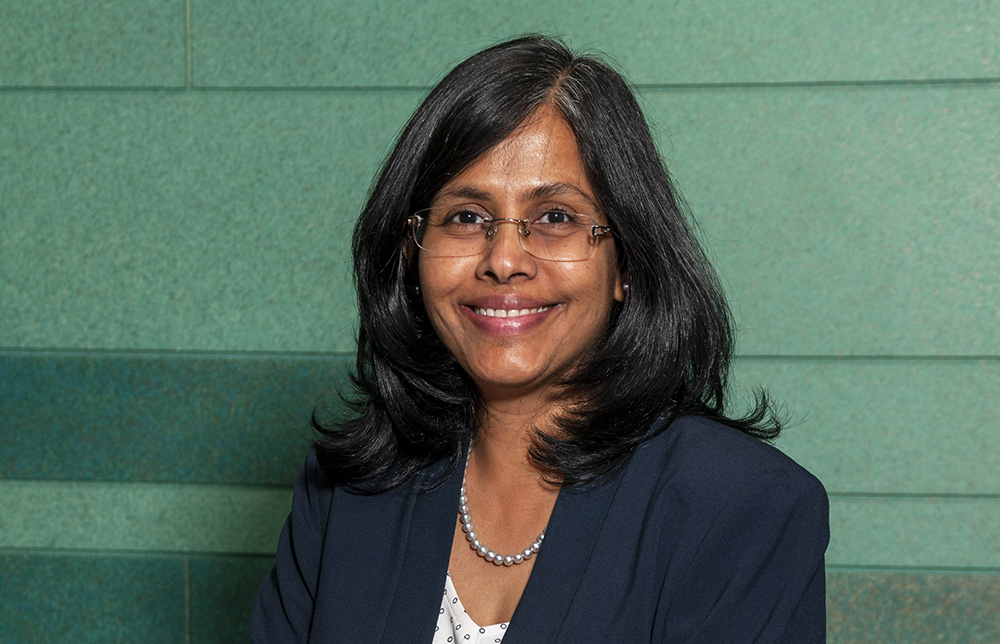Jaipur witnessed some surprising showers and cool temperatures in the second week of March, and in such a tranquil atmosphere, ET Insights had an invigorating talk with Daisy Chittilapilly, President, of Cisco India & SAARC, a woman in tech who has pioneered many firsts. We talk about all topics under the sun (including space) and the last frontier.
Cisco has entered the 5G network – How are you looking at expanding the same in India?
5G is a generational shift and we have partnered with several service providers in India and worldwide as well. Cisco has over 125 active engagements with global customers on 5G. We are working with the major telecom service providers in India and are involved in a partnership with them. The telecom revolution in India has grown all the way from 4G to 5G now. 5G is a low-latency technology – different than others and is expected to accelerate the adoption of devices connecting to the internet and going online, and that will have massive ramifications for industries like logistics and factoring, mining, transportation.
Cisco Webex has entered a new frontier now – taking video calls into space – can you talk about it?
The first time I heard about space conversation was when our previous Chairman and CEO, John Chambers, talked about routers and space many, many years ago. The idea of routers in space had me astounded. And here we are connecting and enabling astronauts to talk and do live video calling. It’s a great moment in history for sure. We endeavour to be pioneers and this might further pave the way for more connected space exploration, human interaction, and tourism.
From space, let us go to a project near your heart. You have been personally involved in mentoring women in tech initiatives. Can you elaborate more on that?
I am one of those 70’s model children. A generation that accepted that you have put your head down and work towards a goal and push your way through. When I joined Cisco, there was a colleague of mine. She sat me down one day and said, “There is value in sharing experiences, and for you, perhaps putting your head down and pushing through is your primary functioning style. But a lot of people give up when it gets too hectic and so sharing your story will help other women. Seeing people who’ve gone through the same struggles, come out much stronger.” This is where my motivation to be a mentor started and I have always allocated time and energy and resources to share my experiences forward.
The problem today is that issues arise in the middle of the work lifecycle. Life events happen, and many women quit their jobs. All these women are in middle management. And if you lose these women, then you cannot aspire to leadership representation – for boards, etc. So, retention programs have become integral to the industry now. This is massively important to businesses, and of material importance to the economic prosperity of the country. The amazing thing is that the government sees it, as that’s where their focus is as well.
Views on sustainability goals and sustainability initiatives
We have been on this mission for some time now. So, we will meet the scope 2 and scope 3 targets by 2025 and work towards becoming totally net zero. Some of the interesting things we’re doing – about 77% of all the energy we consumed in India in FY22 came from renewable sources. Single-use plastic has been a distant dream on our campus for more than two years. Rather than the enterprise, it’s the individual moment that matters. For example – at our campus, we give you a glass bottle or you have to bring your own – a small gesture, but it goes toward the bigger initiative. It’s an individual movement also, because to succeed as a company, you cannot walk without people.
Our supply chain and our packaging have become environmentally responsible. Our products are mostly EE based on the campus and, as you know, we support a lot of hardware recycling too. Disposing of it in a sustainable fashion is also something we’re already doing consciously. Over the last five years, we’ve implemented over 62 projects through our EnergyOps program that avoided 29 GWh of energy.
And last but not least – according to the United Nations Environment Program, buildings account for 39% percent of annual carbon emissions worldwide. We retrofitted our office -PENN 1 Plaza in New York City. Our commitment to sustainability shines here. The thing is, when you have a new building, they could have the highest level of LEED certification. But revamping an old building and making it sustainable shows our commitment. Today, the Penn 1 Plaza emphasizes two messages – one, you can understand sustainability and the other is the future of work in action. It’s a very nice example of how technology can be sustainable.



